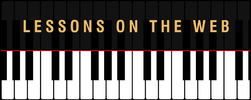|
Music theory is basically how music is put together…the mechanics of it all. It tells us how long to play a note, what note to play, how fast to play it, and how it connects to all the other notes around it. There are many different aspects of music theory that tell us these things, such as rhythm, tempo, note values/duration, key signatures, and more. We start learning music theory as soon as we start learning how to play the piano…we just do not realize that. While we are learning where Middle C is on the piano (usually the first note that we learn) we are also learning what C sounds like and how it relates to the key/note next to it which is D. When we first start a new piece, we learn what the key signature is and what the time signature is. These things tell us what notes to play and how many of them we play in each measure. Today we are going to go over the most important basics that you should know because they are the foundation of all the music theory applications that you will be learning as you advance in your piano playing. These three important elements of music theory are pitch, rhythm, and keys. Pitch is easy to understand if you simply think about how high or low the notes go. Typically, higher notes are played with our right hand on the piano keyboard and lower notes are played with our left hand. On the music staff, pitch goes up and down, not across like the notes do. Notes can move up and down in consecutive order or they can skip notes while still going to the same direction. Rhythm is the timing of how you are playing the pitches in the piece and in each measure. It organizes all the pitches into a larger picture that make up the piece of music; it gives form to the pitches. On the staff, rhythm is read left to right just as the notes are written on the sheet music. In music rhythm is represented by the time signature which tells us how many beats are in each measure and what kind of note gets the count/beat. Keys tell us what notes are sharp, flat or natural and let us know exactly what pitch we are to play in the piece. Each key has its own unique set of notes where some are sharp or natural or sharp. Keys will always have natural notes in them and either sharps or flats; it will not have a combination of sharps and flats, however. In music the key is represented by the key signature. In order to process these three aspects of music theory into your piano playing, you should learn basic time signatures, such as 4/4, 3/4, 2/4, & 6/8 and should also know note values such as how many beats whole notes, half notes, quarter notes & eighth notes get to understand how to count a time signature. *Remember that the top note in a time signature tells us how many beats are in a measure and the bottom note tells us what kind of note gets the beat. 4/4 time means that there are four quarter notes in each measure, since the bottom 4 represents a quarter note * Learning key signatures is the other important task to accomplish to be able to recognize what key a piece is in and what notes are in that key. In the following video I share a great online resource with a key signature chart and go over it at the piano showing you how to learn your scales and key signatures at the same time. I will also go over examples of pitch, time signatures and other goodies at the piano keyboard so you can make sure you understand these aspects in your own playing. If you like my tips and lessons, you will love the courses over on my website. Whether you are a beginner looking to get a solid foundation to build on or you are looking to take your existing skills to that next level, the online music courses on my website https://www.pianolessonsontheweb.com will help you do just that.
Leave a Reply. |
AuthorMost blogs written by Archives
June 2020
Categories
All
|

 RSS Feed
RSS Feed